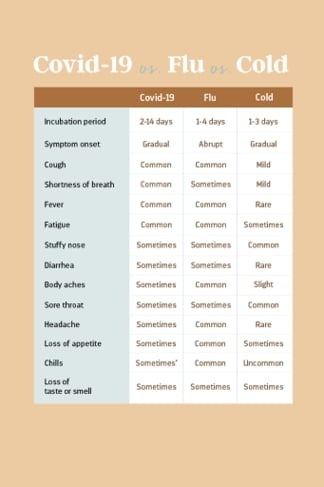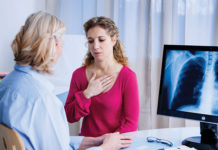
“Don’t go outside,” our grandmothers scolded. “It’s wet. You’ll get sick!” As wise as she is, that’s not quite how the cold and flu viruses work. Let’s break it down.
Invasion of the body snatchers
Dr. Thomas S. Ahrens is a fellow of the American Academy of Nursing. As an international researcher, he has authored five books and more than 100 research papers. You could say he knows a thing or two about how these viruses work.
What does “flu season” even mean? “The flu season typically runs from November to May,” explains Ahrens. During this time, the air is colder and drier, which helps the flu virus survive longer and spread further. However, colds thrive all year. As for COVID-19, it’s likely too early to tell, but experts believe that fall and winter may see a surge in cases, especially as people spend more time indoors.
The difference between a cold and the flu
Walk down the aisles of any drugstore and you’ll see product after product marketed for both colds and flu. But these two illnesses are hardly twins.
“It’d be like grouping all humans together as identical,” explains Ahrens. “While the cold and flu are both caused by viruses, they’re two very different viruses with different actions.”

With the common cold, you’ll have symptoms such as
- a runny nose
- sneezing and coughing
- a sore or irritated throat
- body aches
If you have the flu, you’ll experience
- a fever and chills
- fatigue
- body aches
- coughing
“The muscle aches and pains are typically much greater with the flu,” warns Ahrens. “You may have a sore throat with both, but it’ll be worse with a cold. And you might feel a little more congested and stuffy with a cold. However, in general, you’ll just feel much worse with the flu. Unless you’re a man—we complain a lot no matter what.”
What about COVID-19?
COVID-19 symptoms can vary widely. Some people may be asymptomatic, or have very mild symptoms. That’s why it’s so important to be cautious.
Common symptoms include
- fever
- chills
- cough or worsening of chronic cough
- shortness of breath
- sore throat
- runny nose
- loss of sense of smell or taste
- headache
- fatigue
- diarrhea
- loss of appetite
- nausea and vomiting
- muscle aches
Less common symptoms can include
- stuffy nose
- conjunctivitis (pink eye)
- dizziness, confusion
- abdominal pain
- skin rashes or discoloration of fingers or toes
While we once ventured to work or out in public when we had “just a cold” (or even worse), that’s certainly not the right course of action these days. Staying home when we have any symptoms is one of the most important things we can do to help stop the spread.
If you suspect that you have COVID-19, contact your local public health department and follow their guidance regarding next steps, including possible isolation and testing. This is also essential so public health officials can conduct any necessary contact tracing. Always follow directives from your local health authorities—doing so will help protect you and others.
Together, we can help support one another and slow the spread of viruses, this season and all year long.













